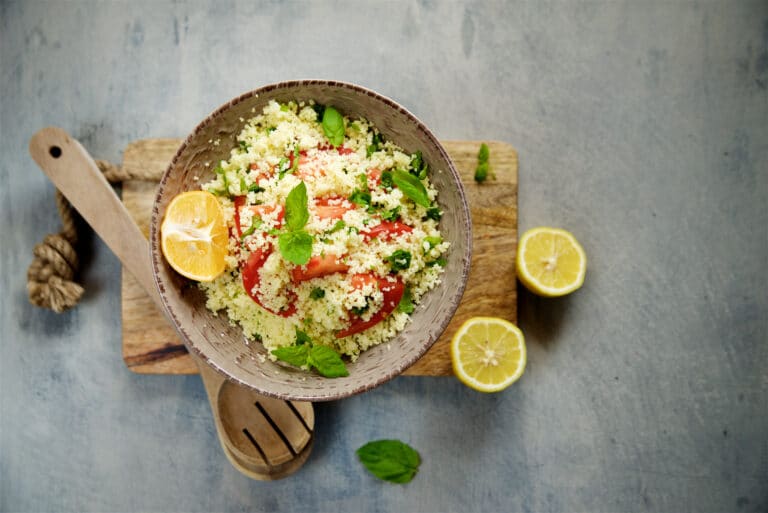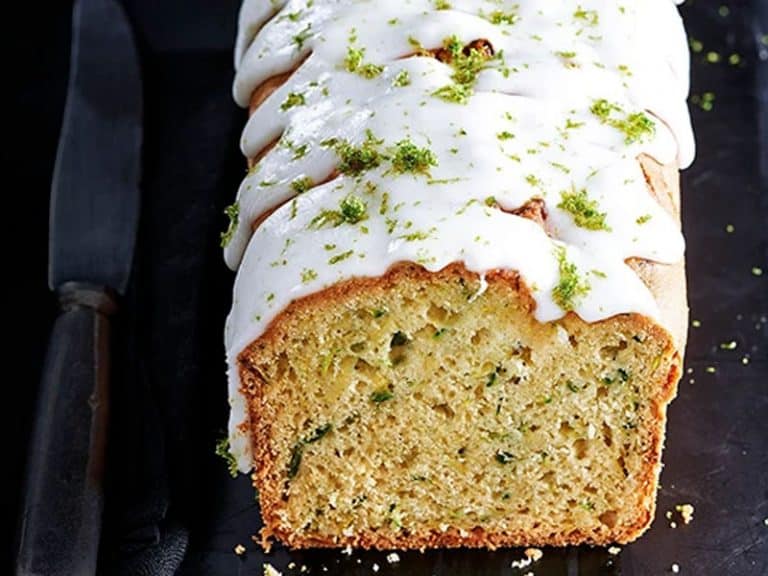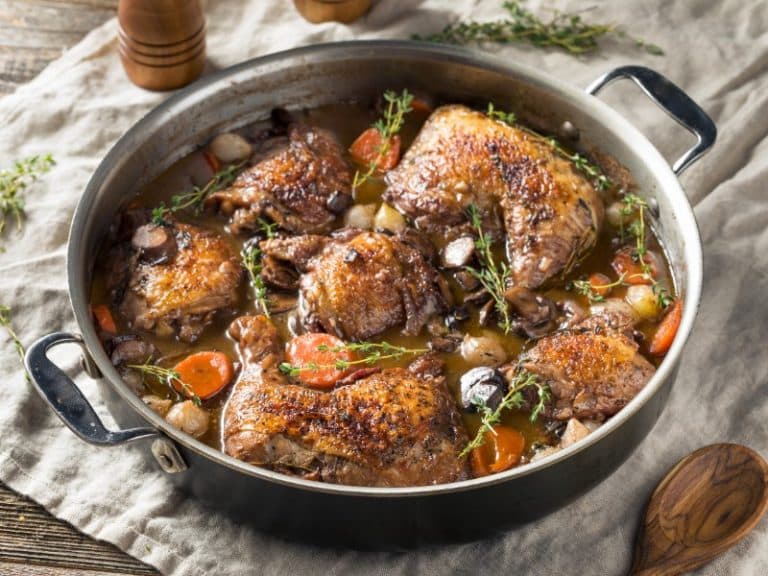What Do Capers Taste Like?
Capers taste like green olives with a hint of lemony aroma and a smack of tartness. Capers are packed in brine or salt, so they have an intense salty, tangy, and savory flavor that gives depth and aroma to different types of dishes.
Green in color, capers are tiny orbs the size of a corn kernel. There are several varieties of caper based on their size. The smallest variety has a delicate texture and a palatable flavor, while larger varieties have a punchy, acidic aroma.
Related Reading: What Do Lentils Taste Like?
What are Capers?
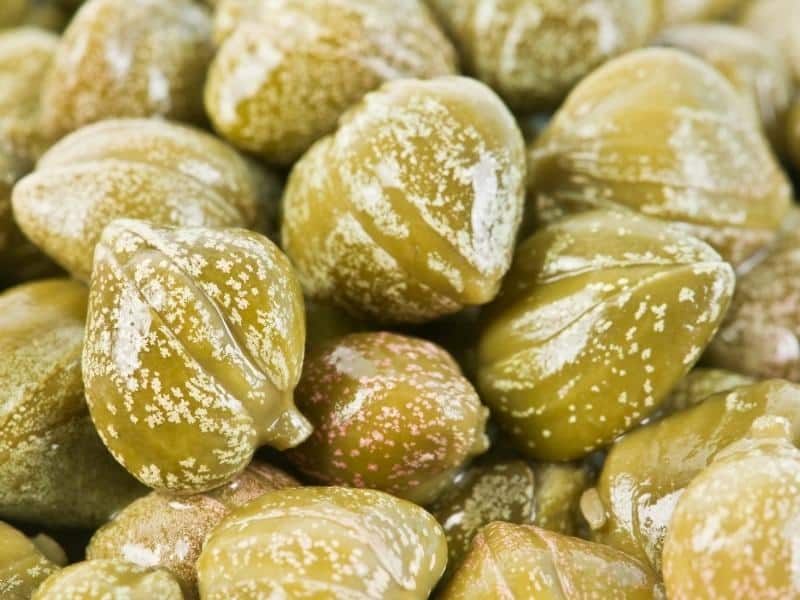
Capers are the un-ripened green flower buds of the Capparis spinosa plant, or caper bush. The prickly caper bush grows wild all over the Mediterranean and some parts of Asia.
Capers are usually pickled in brine or cured in salt. The preserving process gives capers their signature briny and tangy flavor.
Commercially-sold caper buds range in size from tiny (the size of a baby pea) to large (the size of a small olive).
There are several varieties of capers based on size. French nonpareils are the smallest variety, measuring around 7 millimeters in diameter. Smaller varieties of capers have the most delicate texture and a more intense flavor. They are also more expensive than other, larger types of capers.
Other commonly available varieties of capers are:
- Surfines (7mm to 8mm)
- Capucines (8mm to 9mm)
- Capotes (9mm to 11mm)
- Fines (11mm to 13mm)
- Grussas (14mm)
Capers pack a nutritional punch and may provide health benefits. A drained tablespoon of capers (9 grams) contains:
- Calories: 2
- Protein: 0.2 grams
- Carbs: 0.4 grams
- Fiber: 0.3 grams
- Sodium: 9% of the recommended daily value
- Copper: 4% of the recommended daily value
- Magnesium: 1% of the recommended daily value
- Iron: 1% of the recommended daily value
- Vitamin K: 2% of the recommended daily value
- Riboflavin: 1% of the recommended daily value
Cooking with Capers
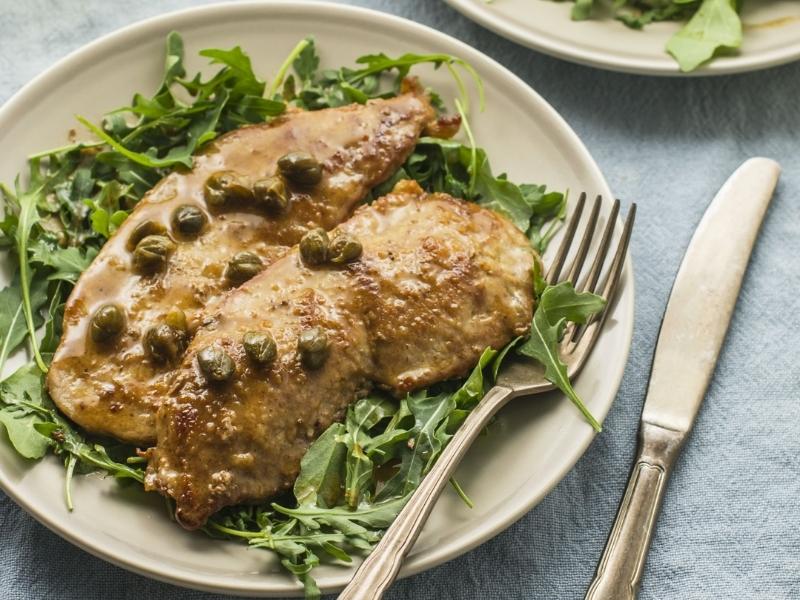
Use capers straight from the jar to add a tangy and salty flavor to cold dishes like tuna salads or potato salads. Rinsing the capers removes some of the vinegar or salt, intensifying the caper’s authentic lemony and floral flavor.
Capers are good cooked too. For chicken piccata and pasta puttanesca recipes, add whole capers to the rest of the ingredients in the heated pan near the end of the cooking process. Adding capers last helps them keep their tangy flavor and maintain their shape.
Here’s a list of foods and recipes that capers are often added to:
- Chicken piccata
- Pasta puttanesca
- Tuna salad
- Bagel and lox
- Tahini caper salad dressing
- Lemon caper vinaigrette
- Braised chicken with olives, capers, and prunes
- Cauliflower steaks with caper butter
- Catfish piccata
- Broiled tuna with lemon caper sauce
- Veal scallopini with lemon and capers
Caper Substitutes and Alternatives
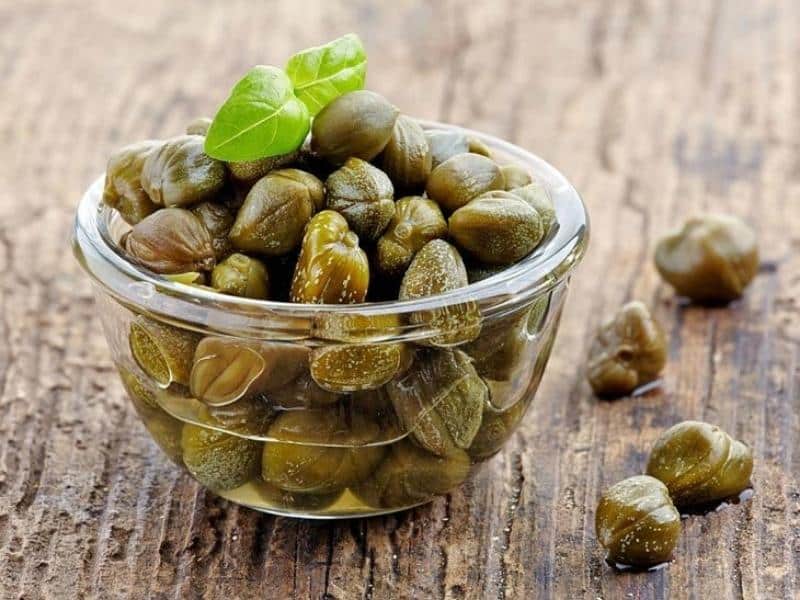
The caper’s distinct bold and savory flavor is hard to replace, so having a stored jar of capers in the pantry is worthwhile. However if you’re in a pinch, there are several ingredients that have a similar flavor and texture to capers, and that you can use as substitutes.
Green Olives
Chopped green olives are the best substitute for capers. Green olives aren’t as savory as capers, but can mimic the caper’s briny and olivey flavor.
Use finely chopped green olives as a 1:1 substitute for capers in chicken piccata, casseroles, salads, and sauces. Chopped green olives can also replace capers as a garnish on beef tartar or salmon.
Thyme
Thyme is a very pungent aromatic herb with a strong and tart flavor, similar to that of capers. To substitute capers, use dried or ground thyme, which are much more aromatic and flavorful than fresh thyme.
Add the dried thyme to a hot pot with the rest of the ingredients in the initial cooking stages. Using the thyme early on will ensure that its flavor and aroma are blended with the other ingredients.
Substitute 1 tablespoon of dried or ground thyme for every 1 tablespoon of capers.
Green Peppercorns
Green peppercorns are unripe black peppercorns, and are usually pickled or preserved in brine or vinegar. The mildly tart green peppercorns look almost exactly like capers. Green peppercorns, however, aren’t as pungent as capers.
Use whole or chopped green peppercorns from the jar to substitute capers in sauces, potato salads, salad dressings, and pasta dishes. Substitute 1 tablespoon of green peppercorns for every 1 tablespoon of capers in the original recipe.
Nasturtium Seeds
Nasturtium seeds are edible seeds that form after the nasturtium plant flowers. Pickled nasturtium seeds are an excellent substitute for capers because they look the same and have a similar flavor.
Use pickled nasturtium seeds as you would use capers in your favorite cold food recipes. Substitute capers with pickled nasturtium seeds using a one-to-one ratio, in potato salads, bagels and lox, salads, and pasta dishes.
How to Store Capers
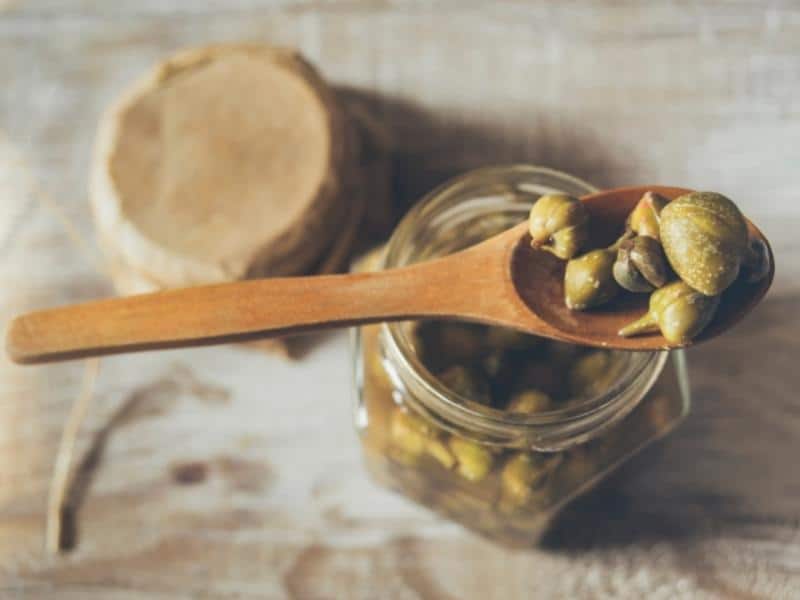
Keep unopened store-bought jars of capers for up to six months in the pantry where the temperature is below 75°F. Once opened, store brine-packed capers for up to two years in airtight containers in the fridge. Make sure that capers are covered in brine.
Like any other food, capers can go bad, especially if they aren’t stored properly. The best way to tell if the capers have gone bad is to check their color.
Discard all capers that have turned brown or black, if you notice any white spots on the capers, or if they otherwise look discolored.
A strong, foul smell is another sign that the capers have gone bad. Throw away the entire jar of capers if it gives off a foul odor after being opened.
Rusting, bulging, leaking, or chipped jars of capers should be discarded as well.

